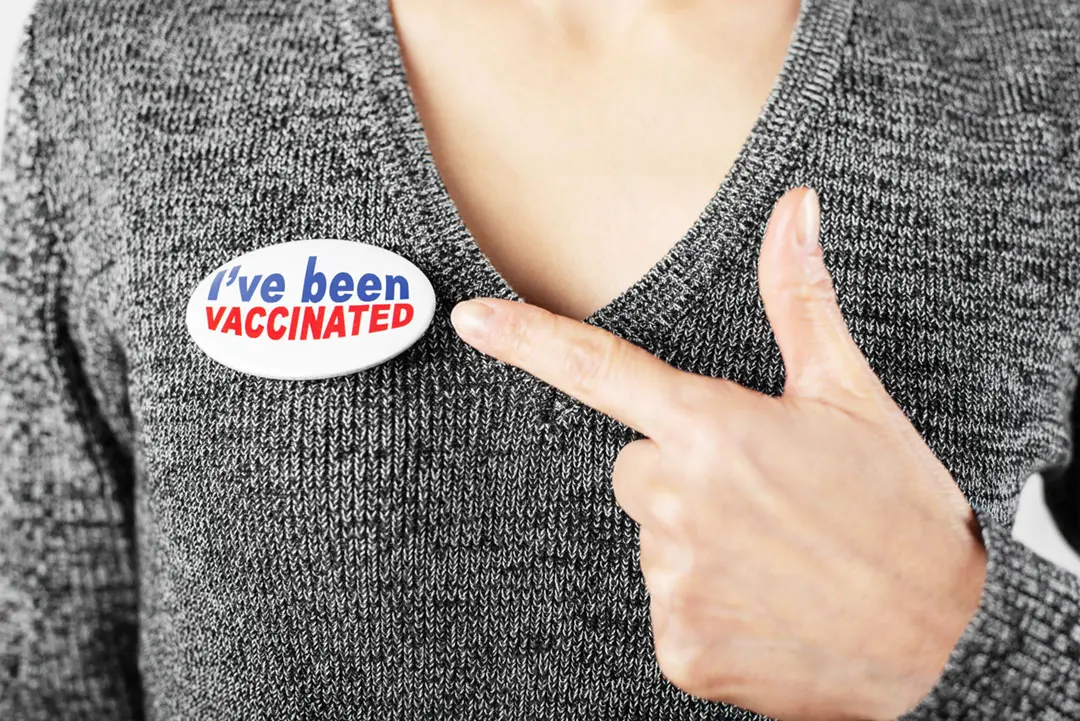

The development of vaccines against COVID-19 has been a massive success for the United States. With the hopes of the vaccine becoming more available to the public, employees have high hope that returning back to the office full-time is in the near horizon. Vaccine release has given us hope for rapid restoration of the social and economic health of the country. More importantly, companies can now construct ways of encouraging their employees to come back.
In the light of science’s victory, corporate managers can shift their focus to growing their business while keeping their employee population safe.
At the same time, there is also fear and hesitancy for many employees to get the vaccine. According to the USA Today-Suffolk University survey, only 46% of Americans intend to take the vaccine at the earliest opportunity, with the remaining either delaying or avoiding the vaccine altogether.
Luckily, vaccine hesitancy does not inevitably lead to the rejection of a vaccine. There is evidence that many individuals who are skeptical about the vaccine will eventually consider taking it.
Companies should support the government’s efforts in improving immunization rates to ensure the safety of their employees and society at large. What companies need is a platform that encourages real-time peer-to-peer feedback, where leadership can interact with their employees by showing efforts to get vaccinated.


Professional lawyers predict that employers will have the right to mandate COVID-19 vaccination for most categories of their employees as a part of the liability to keep the workplace “free from recognized hazards that are causing or are likely to cause death or serious physical harm” (OSHA.)
According to ADA (Americans with Disabilities Act), such a mandate must be “job-related and consistent with business necessity.”
However, even if companies can require employees to get the FDA-approved vaccination, it may significantly affect some employees’ morale. This is where a recognition platform can be beneficial to the company. Encouraging your employee population using gamification incentives can boost morale within the workplace.
In that regard, many legal advisors and HR experts recommend starting from alternatives, including education and incentives.
Timothy Hilton, partner, and expert in Labor and Employment and Health and Safety at Husch Blackwell’s recommends preparing for the time when vaccines are available for everyone by following these 5 steps:
According to their legal advisor, a person in charge of a program should have both the appropriate skills and actual “bandwidth.” They will need to follow vaccine developments and their state’s plans, continually update the company’s plan, coordinate with other colleagues, and oversee ongoing communication efforts around the COVID-19 vaccine.


The amount of misinformation about COVID-19 has exceeded scientific evidence by far. However, company leaders and HR managers can create a stream of valuable information to help employees overcome fears and make optimal health decisions.
Following Sarah Thomas and Greg Szwartz, managing directors at Deloitte, we’d like to draw your attention to the Health Belief Model.
According to this model, we could break down the preparation for a health-related decision into four parts:
People rely on these concepts when they weigh the perceived threat of certain medical conditions against the net benefits of a health-related decision. They create an individual’s “readiness to act.” Certain cues to action activate that individual’s readiness.


Your communication program should target the perception of the four concepts listed above and provide clear cues to action in order to have an impact.
Measures and considerations offered by the panel of experts at the “How to Encourage Vaccine Adoption” webinar, could be summarized into the 7 steps you can consider within your workplace’s communication program.
How to encourage COVID-19 vaccination in the workplace:
How can you normalize the vaccination? Wändi Bruine de Bruin, Provost Professor of Public Policy, Psychology, and Behavioral Science, suggests the following (video transcript):
“… So, a study that I published in 2019 suggested that people who perceive that more of their friends and family have gotten the flu shot are more likely to get the flu shot themselves, even if they didn’t do so in the past. And so, that suggests that social norms are important. People look at what others are doing. And so, it’s important to make it more visible what others are doing. So, if people have gotten vaccinated, you might ask them to talk to their friends and family about it, to post about it on social media.”
Sharing vaccination experiences at the workplace, posting nice photos on your internal social network, myth-busting in a humorous manner – all these methods could significantly add up to create positive peer pressure. Such content tactics could be easily implemented through tools like apps for employee rewards and recognition.


During the “COVID-19 Vaccines for Your Workplace” webinar, Jenna Brofsky, the Senior Associate and expert in Labor and Employment and Health and Safety at Husch Blackwell’s, suggested some options for incentivizing employees who are willing to get a vaccine:
This list totally aligns with our vision. We also need to add that employees who have to be exempt from vaccination for medical and other legitimate reasons, should not fear pressure and social rejection at the workplace. All these efforts should be announced as employee protection measures, especially for those who are the most vulnerable.
It might be tempting to cut corners and simply offer employees a monetary incentive, but we would strongly advise against this tactic.
As Jason Doctor, the director of Health Informatics at the USC Schaeffer Center, mentions in the webinar dedicated to vaccine adoption:
“One concern about paying people, especially paying everyone, is that it may send the wrong signal. It could send a signal that “this could be harmful, and so we’re gonna pay you” … there are probably other ways that we can go about doing this.”


A written policy offers a consistent message, both for employees and managers that must communicate the message. The written policy should include the expectations, timelines, and reasons why the company has adopted the policy.
If your C-level executives demonstrate their willingness to take the vaccine, your employees are likely to follow suit. Look to leaders like former presidents and business leaders who are willing to participate to set an example in the workplace.
The key to adoption will be making sure employees at every level have someone they can talk to directly about questions or concerns. Make sure every department has someone appointed who can fill this role.
Post details about the vaccine and its availability on your communication platform. Communicate regularly via email. Make sure your employees have a comfortable place to get questions answered. Education will encourage adoption.
Carrots versus sticks are especially powerful when approaching emotionally charged behavior changes – i.e., asking your employees to get a vaccine. Providing an incentive to your employees will positively affect the workplace and create an environment that encourages the vaccine.
If you would like a PDF version of the 5 steps to distribute to your management team, you can download a copy at www.online-rewards.com/COVID 5 Steps.pdf
Online Rewards has been helping US companies and employees with developing behavior change programs around health and wellness for almost 20 years. If you would like to learn more about how we can help you achieve full employee adoption of the COVID-19 vaccine and boost employee morale, please choose any convenient way to contact us.


WorkProud is committed to helping its clients create a unified approach to the employee experience by helping them build cultures of workplace pride. Trusted by millions of users at some of the world’s most recognized employer brands, WorkProud delivers a comprehensive approach to building company cultures that inspire people to be Proud of their Work and Proud of their Company.




Every month, we share news, knowledge, and insight into what we believe is a pretty simple proposition: If you are “proud of your work and proud of your company,” you are more engaged, more productive, and more likely to stay with your company for the long haul.
*By selecting “SIGN UP,” you agree to WorkProud’s Privacy Policy. You may unsubscribe from our newsletter at any time. Please note when unsubscribing: it may take up to 10 business days for your request to take effect.